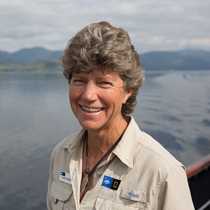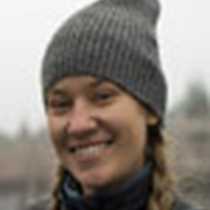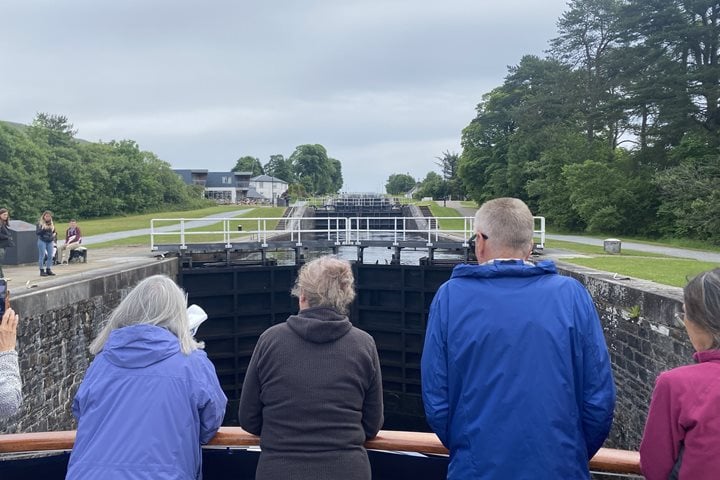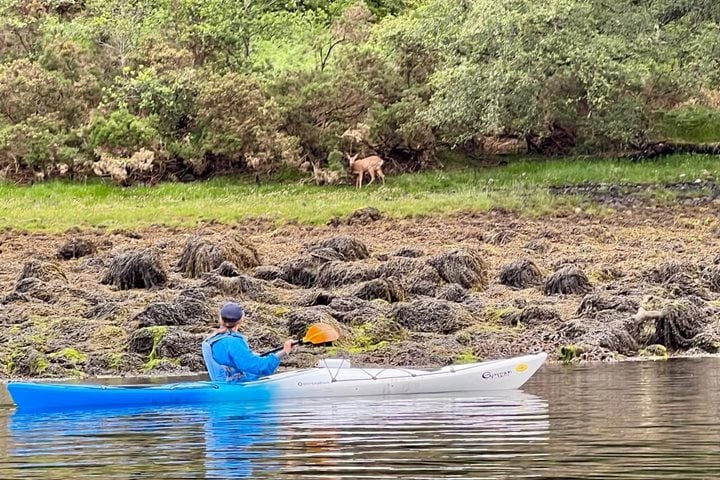A steady rain accompanied us as Lord of the Glens made her way down the locks of Fort Augustus and across Loch Ness. Loch Ness is remarkable for more than its famous monster: Created during the Caledonian Orogeny around 450 million years ago and carved by Ice Age glaciers, Loch Ness is 23 miles long, 755 feet deep, and is large enough to hold as much fresh water as England and Wales combined.
Though we didn’t see Nessie, we did have the chance to view the ruins of Urquhart Castle, a medieval castle with a violent history that stands on the edge of Loch Ness. In the fourteenth century, Robert the Bruce regained the castle from King Edward I, and in following centuries, it was frequently attacked by the MacDonalds. The castle was blown up in 1692 to prevent Jacobite rebels from using it, leaving only picturesque, crumbled towers and walls.
As we sailed across Loch Ness, we heard a presentation on the Jacobite uprisings which was followed by the crushing of Highland culture. This led to the Highland Clearances, when many people were forcibly removed from their homes to make way for sheep farms. Next, we heard a talk on Nan Shepherd, a twentieth-century poet and writer who was significant in the Scottish Literary Renaissance and is now best known for her book The Living Mountain.
We arrived at our final berth in Inverness after lunch and disembarked for a visit to the Culloden Battlefield with its award-winning visitor center. This was the site of the crushing blow to the Jacobites, and the resulting suppression of Highland culture. The Culloden Visitor Centre provides a history of the events leading up to the final conflict, as well as details of the battle itself. There was time to explore the battlefield, where many of those killed in the fight are buried. The rain was pelting down, however, so most stayed within the center. The field, drained and planted in past decades, is now only a remnant of the boggy moorland the soldiers dealt with during the battle.
Our final evening was a gala event, with the piping in of the haggis, and a rousing recital of Robert Burns’ “Address to the Haggis,” plus a chance to taste this “chieftain of the pudding race.” A visit from young Scottish dancers topped off the evening. They performed traditional dances to the tunes of the Scottish bagpipe. It was a wonderful week, and as they say in this beautiful country, “Haste ye back!”









